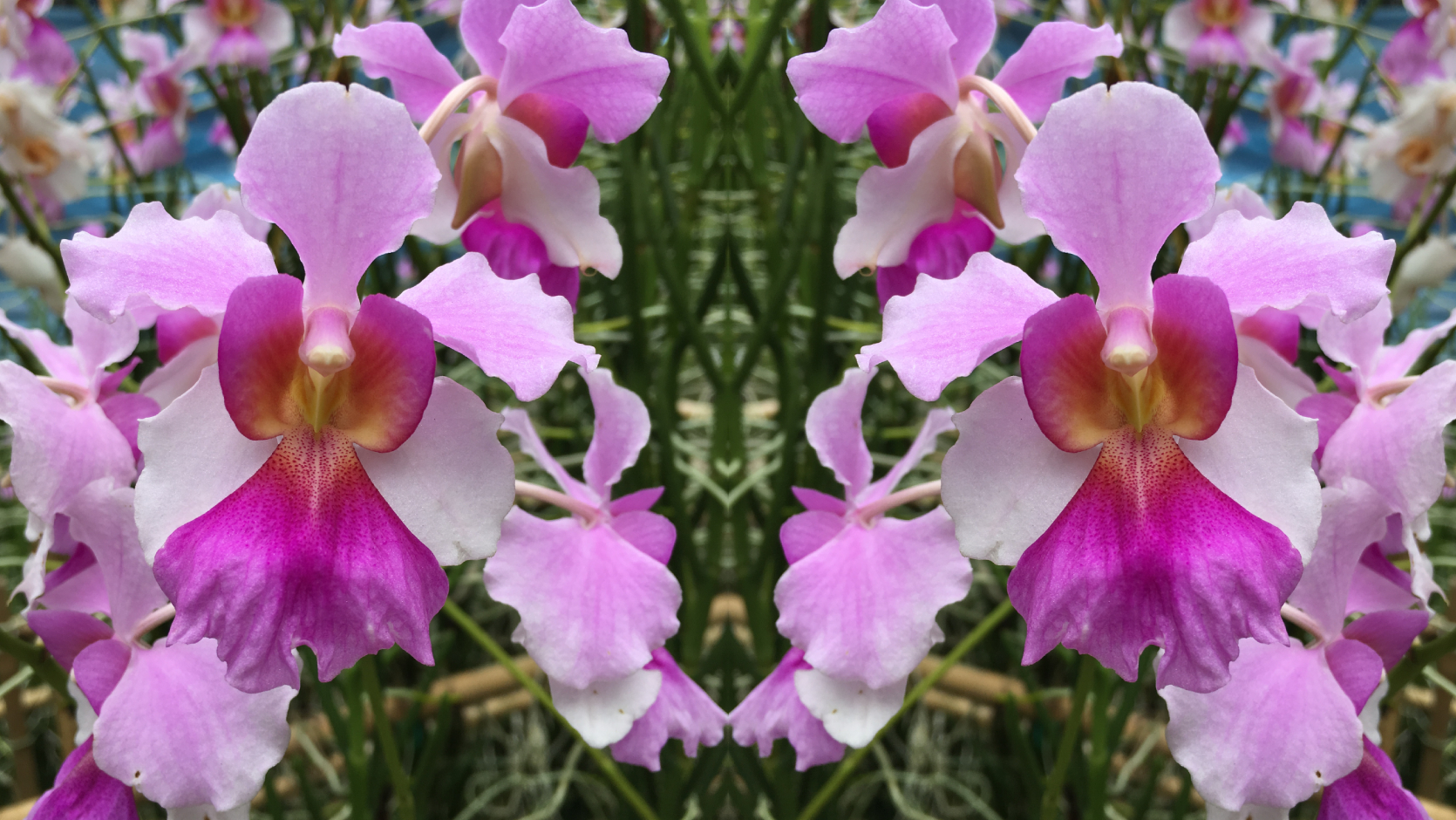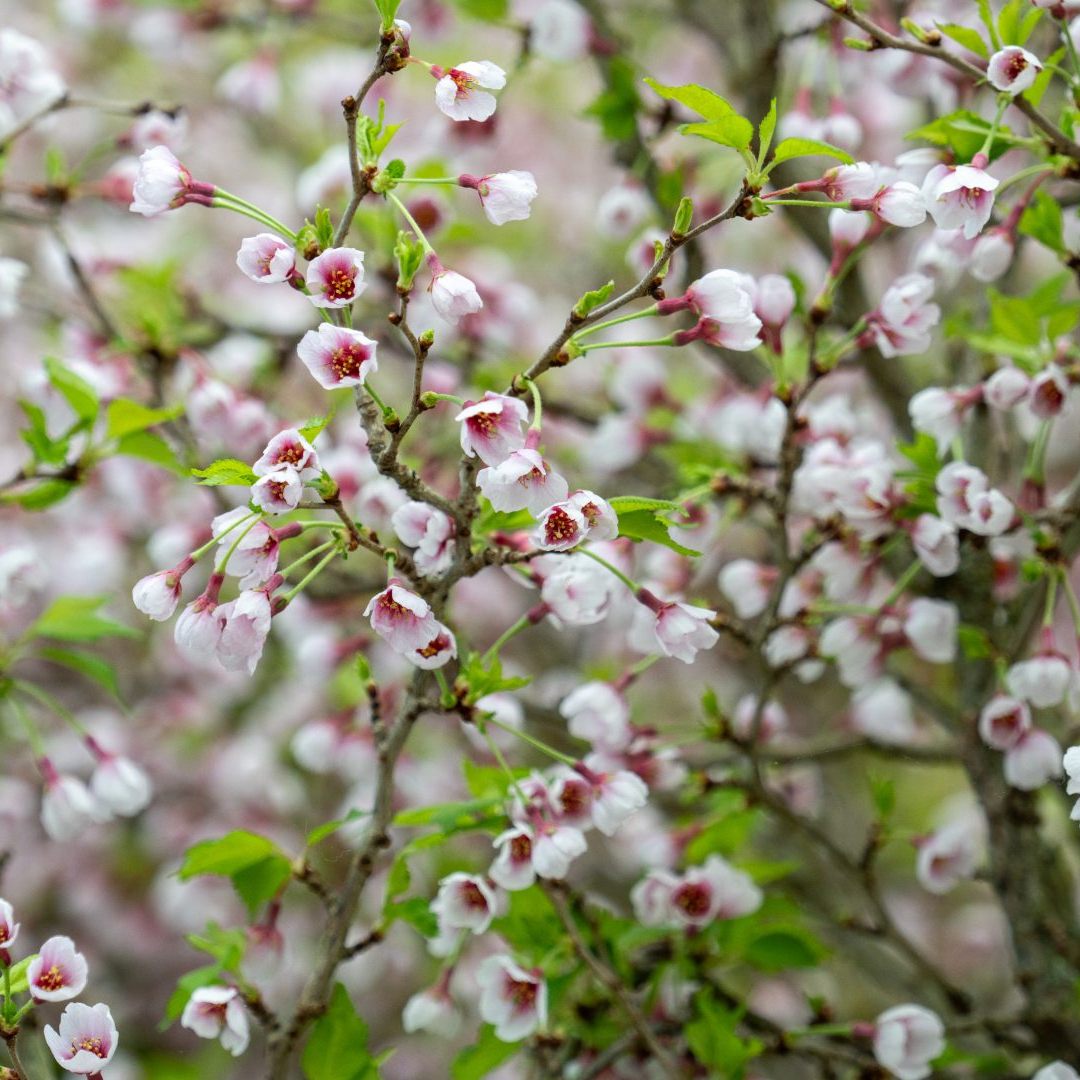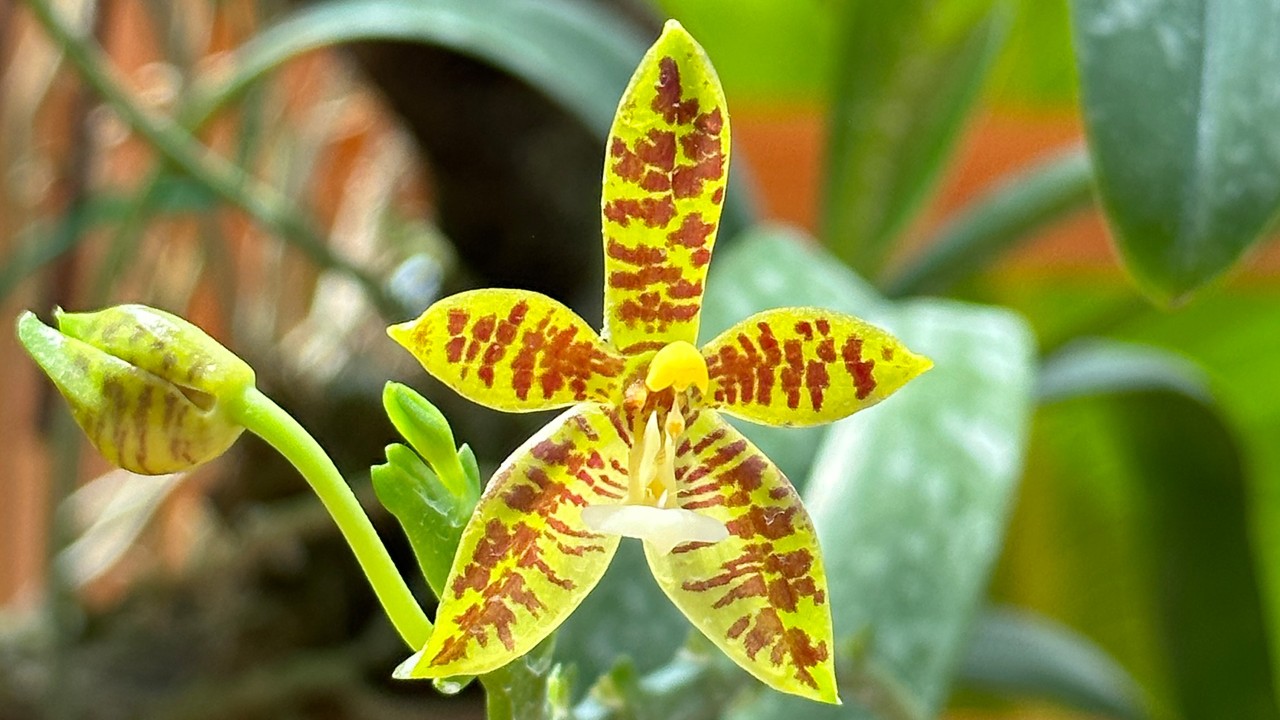
Phalaenopsis (Phal.), commonly called the moth orchid, is a genus in one of the world’s largest and most diverse plant families — Orchidaceae. The orchid family accounts for over 700 genera and more than 28,000 species and is considered to be the most highly evolved of all flowering plants. Phalaenopsis comprises more than 90 species, widely distributed from India through Nepal, southern China, Taiwan, Southeast Asia, New Guinea and northeast Australia. The islands of the Malay Archipelago and the Philippines are the richest locations for Phalaenopsis species diversity. In the wild, Phalaenopsis are epiphytic (growing on trees) or lithophytic (growing on rocks), growing at low elevations up to 1600m.
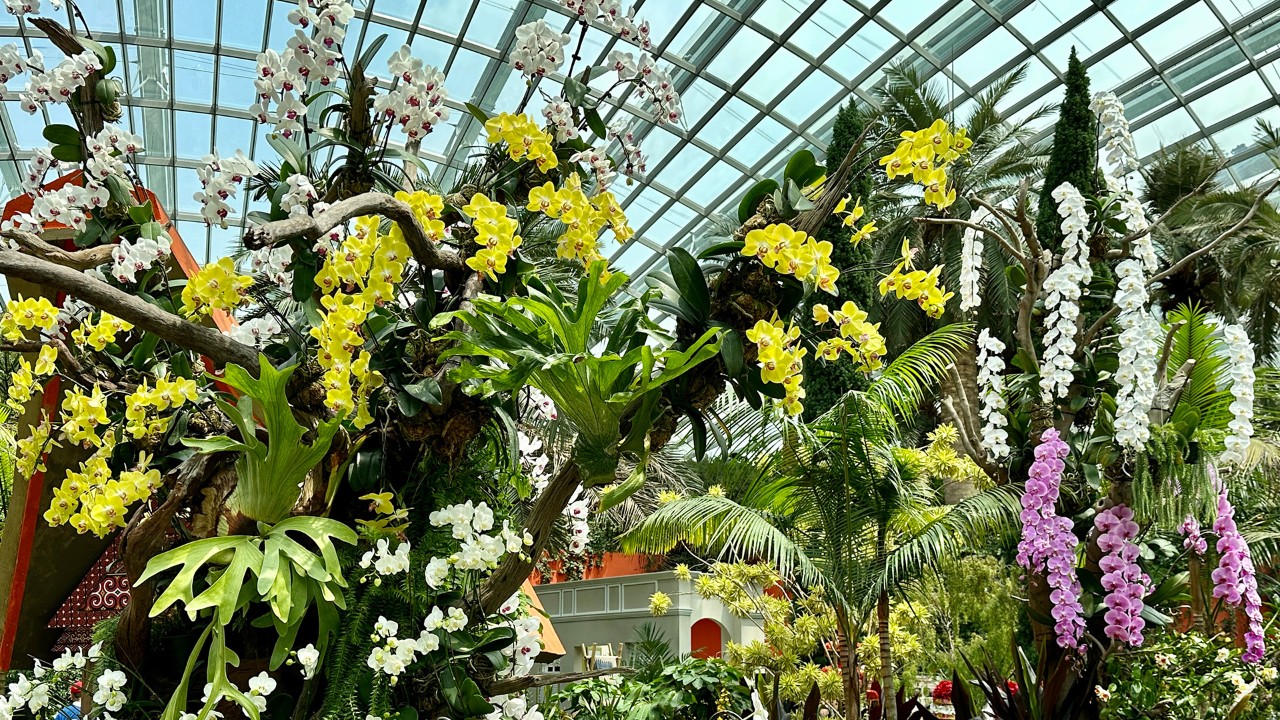 Striking, large blooms of the standard moth orchids mounted on branches in yellow, pink and white.
Striking, large blooms of the standard moth orchids mounted on branches in yellow, pink and white.
Often appreciated and most commonly seen are the standard moth orchids with their long, tall flower spikes bearing large flowers in pink, purple, white and yellow. However, there exist a group of moth orchids which are often overlooked - the novelty moth orchids: species with fewer and smaller flowers, usually with tepals of quite heavy substance (thick-textured), and bright to subtle colours. In fact, many of the fragrant Phalaenopsis belong to the novelty group and their scent is one of the characteristics that contributes to their popularity.
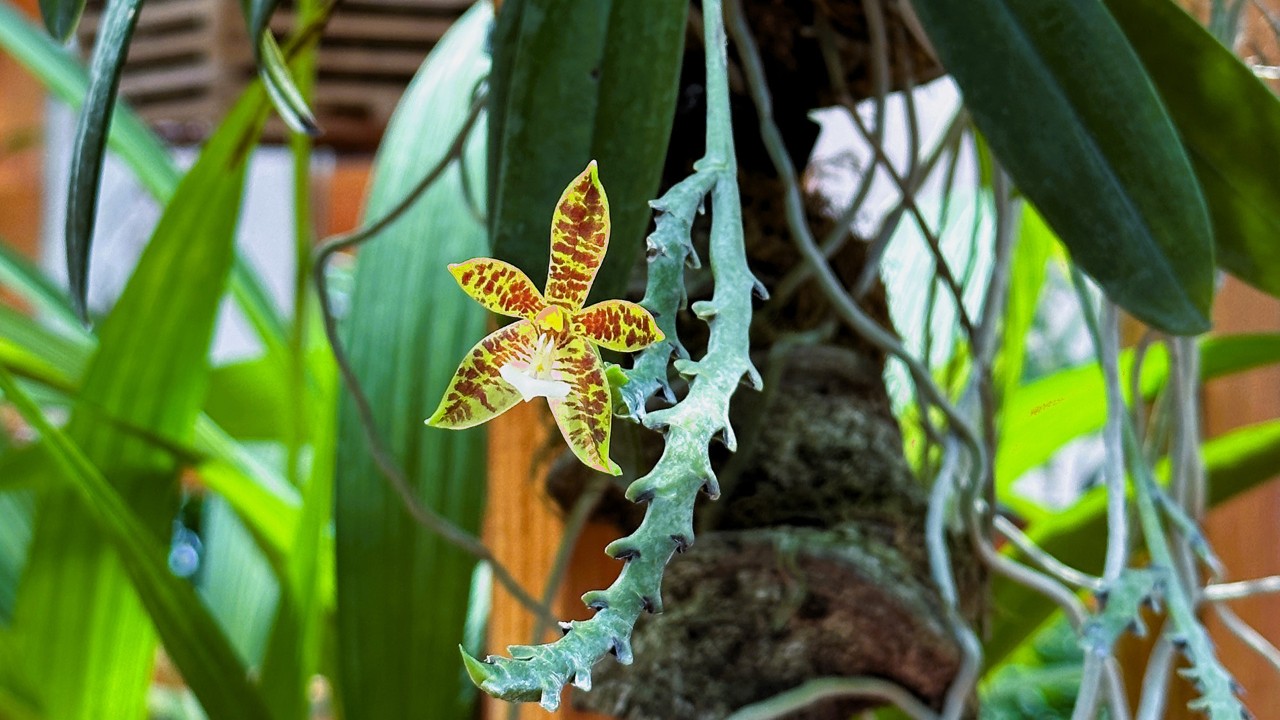 Small-sized bloom (2-5cm across) of the deer-antlered phalaenopsis, a novelty-type moth orchid. Note the characteristic zigzag form of the inflorescence - one of the unique traits of this species. It is 2-3 times smaller than flowers of standard phalaenopsis!
Small-sized bloom (2-5cm across) of the deer-antlered phalaenopsis, a novelty-type moth orchid. Note the characteristic zigzag form of the inflorescence - one of the unique traits of this species. It is 2-3 times smaller than flowers of standard phalaenopsis!
Phalaenopsis cornu-cervi, also known as deer-antlered phalaenopsis, is widespread from northeast India through Myanmar, Thailand, Malaya Peninsular Malaysia, Singapore, Sumatra, Java and Borneo. This species is usually epiphytic, but is also found growing on rocks or tree roots on steep hillsides. Under the dense, humid shade of mango trees, protected from drying winds but exposed to full sun during dormant periods are where they are found in Myanmar, occurring at low elevations on swampy islands at the mouth of the Irrawaddy River. In Java, this orchid grows on the slopes of mountains at 50-1000m.
This small to moderately sized monopodial epiphyte may be quite robust and has extremely thick white roots which appears healthiest when allowed to hang freely. Their leaves are pale green to yellowish, and have a leathery texture. Flower spikes are evergreen and will elongate or branch, producing flowers from the tip for many years. The blooms are waxy, star-shaped, and dull yellow-green, variably marked with reddish brown spots and transverse bars.
Each fragrant flower lasts for about 2 weeks, and are produced singly in succession over several months. The characteristic zigzag blooming pattern of the inflorescence is the highlight of this species. Such yellow-coloured flowers with red markings are highly valued in Asia because yellow symbolises wealth and red signifies happiness and well-being. Phalaenopsis cornu-cervi was presumed nationally extinct in Singapore but is now re-introduced and conserved. To date in orchid hybridisation, this species is the ancestor of more than 480 registered hybrids.
During a manic period known as ‘Orchidelirium’, when orchid collecting was a craze in Victorian England (1837-1901), orchids — specifically those from Asia and the Americas — were so rare, exotic, and difficult to transport and keep alive that only wealthy collectors could afford to own and cultivate them. Phalaenopsis species were one of the most highly treasured orchids in Victorian England as they were most likely to perish during transportation because unlike many other orchid genera, they lack pseudobulbs with storage reserves that would enable greater stress tolerance. The survival of these plants, while being shipped from the tropical Far East to temperate-climate Europe, demonstrates the strength and resilience of orchids, which are currently under even greater threats from climate change and habitat loss. Keep a lookout for this species at the Lath House upon entering Flower Dome before exploring the rest of the Orchid Extravaganza display in Flower Field below!
Written by: Ziana Yacob, Senior Manager (Research and Horticulture)
Ziana's fascination with the many wonders of plants led her to study Horticulture. She has been involved in propagating and nurturing in-house plant collections, with a special focus on orchids. Keeping plants thriving is both a rewarding challenge and a continuous journey of learning for her!
